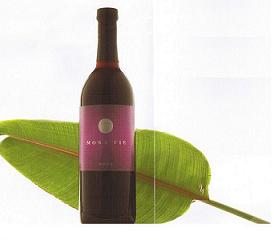 The secrets of the Amazon, gathered and bottled for your healthy, active lifestyle.
The secrets of the Amazon, gathered and bottled for your healthy, active lifestyle.
With the antioxidant powers of the exotic acai berry and the nutritional boost of some of nature’s most wondrous fruits,
Monavie is a unique health beverage designed to accompany the finer things in life.
Monavie is an elegant, sophisticated nutritional beverage, which challenges the notion of what a health drink should be.
How MonaVie Make the difference in our live?
MonaVie is an exquisite health drink, destined to make a profound difference in the lives of countless peoples of the world. The formulators of MonaVie, driven by a passion for helping humanity and bringing abundance into the lives of many, have created the consummate blend of health-promoting fruits from the four corners of the earth.
The crown jewel in the MonaVie formula is the acai berry, found only high atop towering palm trees in the lush, Amazon Rain Forest of South America. For centuries, the indigenous people of Brazil’s Northern Amazon region have revered this legendary berry as an antidote for numerous ailments.
Forgotten Fruits
Cheaper, processed alternatives have replaced many of Earth’s most powerful resources for optimum health-FRESH FRUITS from the richest soils of the world. Yet in this age of environmental pollution of air, water and food, the need for wholesome fruits has never been greater.
By pureeing each fruit in its entirety-flesh, skin, and seed, the full complement of nutrients could be captured. Fruits with the richest pigments and most intense colors were sought for their peak levels of antioxidants and phyto-nutrients. Knowing that proper intake of the right variety abd balance of fruits could enormously benefit mankind, the Monarch scientific team declared its mission.
Born of Mother Nature and Science
The final MonaVie formula includes acai berry, pomegranate, white grape, nashi pear, acerola, pear, aronia, purple grape, cranberry, passionfruit, banana, apricot, prune, kiwi, blueberry, bilberry, camu camu, wolfberry, and lychee. Each fruit and each portion were selected for their specific and known benefits. Their synergistic effect reaches far beyond what any single fruit could accomplish
“[The acai] berry is one of the most nutritious and powerful foods in the world… nature’s perfect energy fruit.”
-Dr. NICHOLAS PERRICONE,
The Pericone Promise as featured on the Oprah Winfrey Show
Balance-Variety-Moderation
MonaVie preserves the principles of balance, variety, and moderation. MonaVie seeks to define what genuine nutrients are meant to do: help the body perform at an optimum level. There is much science required to determine how to not under-aid or over-aid the body in its defense. With MonaVie, we have created the team and completed the research that allows us to say with confidence: MonaVie has the RIGHT balance, variety and moderation.
Who Needs it?
MonaVie is the sophisticated alternative to the vast wasteland of dull health products. Offering two great option, there is a MonaVie that is perfect for you. The original MonaVie offers the healthy blend of 19 wonderous and forgotten fruits. It features the acai berry, recognized as one of the “top 10 super foods…nature’s perfect energy fruit.” While MonaVie Active contains all this and the added support of Celadrin and Glucosamine.
Go to post : Symptom Alleviations By Anne Underwood (Newsweek)
The Amazon Acai Berry
With 10 times the antioxidants of grapes and twice the antioxidants of blueberries, the Brazilian Acai berry (AH-sci-EE) is considered to have the best nutritional value of any fruit on earth.
The Opportunity
Monavie is just launched not long ago, and we are seeking leaders to build an international business. Join Monavie Today! And Let us drink to life Together!
For more information about Mona Vie, please contact me at,
Mona Vie Independent Distributor: Neil Kueh
Sponsor ID: 120253
Country: Singapore Email: monabery@hotmail.com
More Info or Direct Enroll, please log in to http://www.monavie.com
To join immediately! click here, join Mona-Vie





